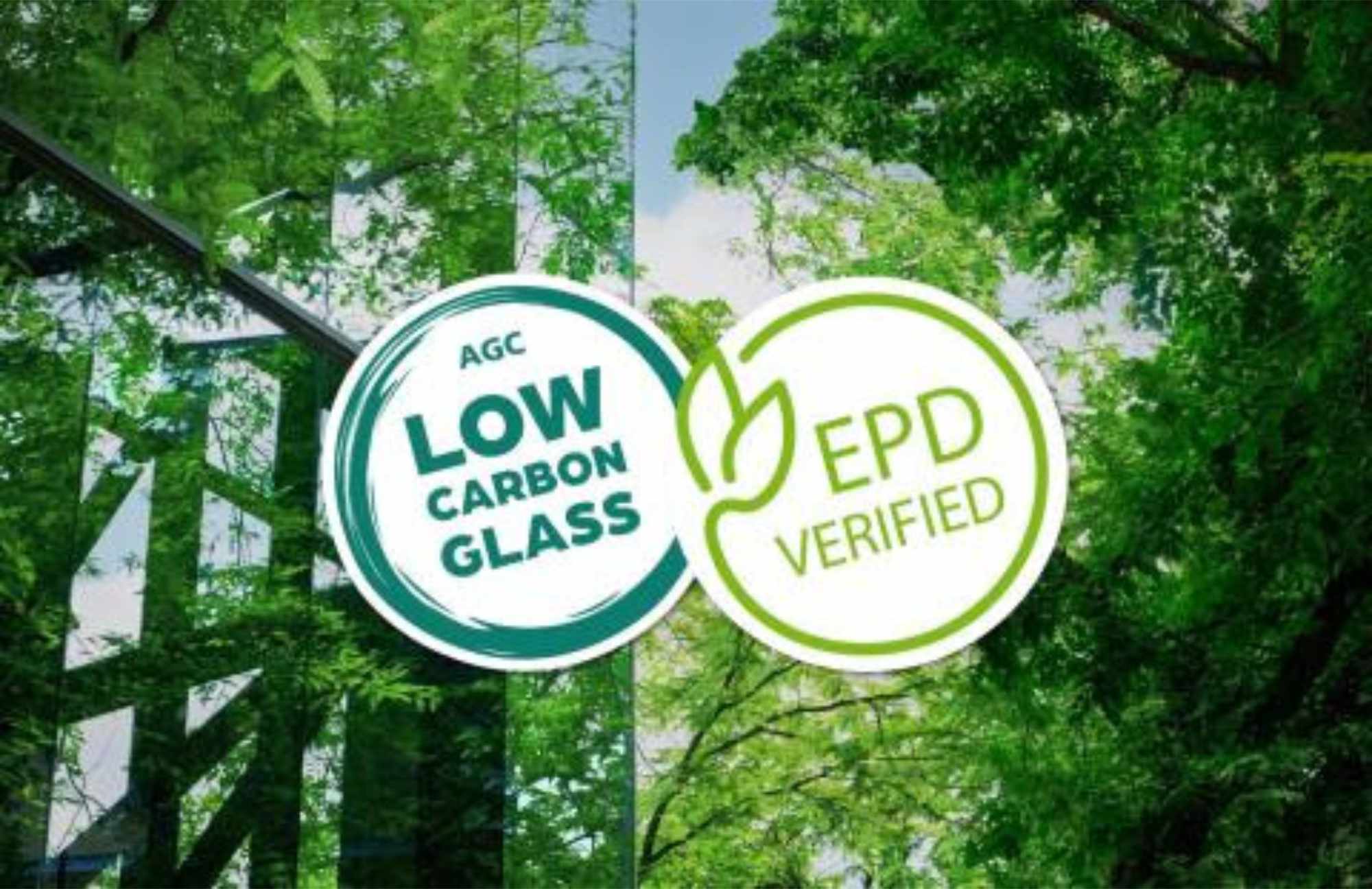AGC Glass Europe is committed to achieving carbon neutrality by 2050. In the meantime, the Group has set itself the interim milestone of reducing its Greenhouse Gas (GHG) emissions by 30% by 2030 compared to 2019. To meet these ambitious goals, AGC has been accelerating initiatives to reduce the impact of its production processes on climate and publicly share their first outcomes with the simultaneous release of new third-party verified Environmental Product Declaration (EPD) for its standard float glass Europe-wide and a first third-party verified EPD for its Low-Carbon Glass.

AGC renews EPD for Planibel Clearlite
For Planibel Clearlite (standard float glass), AGC renewed its EPD. This new assessment of the products’ lifecycle highlights a reduction of the Global Warming Potential (GWP) value from 11.6 kg CO2 eq/m² in 2019 to 10.3 kg* CO2 eq/m² as expressed for 4 mm float glass.
The Planibel Clearlite third-party verified EPD features the lowest GWP value Europe-wide for standard clear float glass.
AGC goes further with EPD for Low-Carbon Glass
Low-Carbon Glass features a further reduced carbon footprint compared to standard float glass.
After collecting all the necessary data from two plants – Moustier (Belgium) and Seingbouse (France) – AGC releases its Environmental Product Declaration (EPD) for Low-Carbon Float Glass, which is published in INIES: the French national reference database for environmental and health data on construction products and equipment.
This third-party verified EPD presenting the life-cycle analysis of AGC Low-Carbon Glass features a reduced Global Warming Potential of 5.5 kg* CO2 eq/m² as expressed for 4 mm float glass. This represents a significant reduction compared to standard float glass.
To reduce greenhouse gas emissions, a holistic approach was applied across the entire value chain. Low-Carbon Glass’s recycled content** is above 50% and it is produced with sustainably sourced raw materials in highly efficient melting furnaces with electro-boosting and renewable energy. Finally, transport between Group sites for finishing processes is optimised.
Professionals can use these EPD documents to help them make informed choices when developing more sustainable buildings having lower environmental impacts.
Low-Carbon Glass looks identical to and delivers exactly the same technical performance as standard AGC float glass. It is available in different product ranges and thicknesses and can be assembled in DGUs and TGUs.
* Global Warming Potential (GWP) Cradle-to-Gate (A1-A3) as defined in NF EN 15804+A2:2019
** Calculated according to ISO 14021:2016, excluding internal cullet
Increased use of cullet via AGC’s Recycle Glass Service
As glass is endlessly recyclable, one of AGC’s main objectives is to use as much recycled glass (cullet) as possible in its production processes. Using larger quantities of cullet makes it possible to reduce direct CO2 emissions since cullet requires less energy to melt and replaces higher-carbon emitting virgin raw materials (during their production and decarbonisation during melting).
To source these larger quantities of cullet and help reduce its GHG emissions, AGC launched its Recycle Glass service, which collects flat glass waste from industry as well as from renovation and demolition projects (end-of-life glazing) for recycling in flat glass production. For end-of-life glazing, AGC works with a network of partners to guarantee that the cullet is of sufficiently high quality for recycling.
Low-Carbon Glass and Recycle Glass are closely linked, since the Recycle Glass programme supports the need for recycled materials in the production of Low-Carbon Glass.
With these initiatives, and others already ongoing, AGC continues to pave the way towards carbon neutrality.
To know more on Low-Carbon Glass and the EPD: www.agc-yourglass.com
